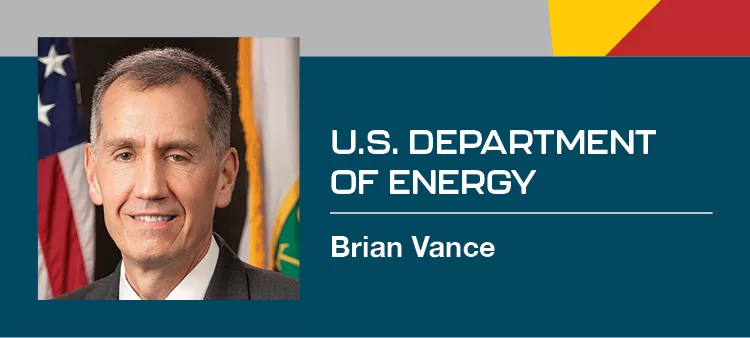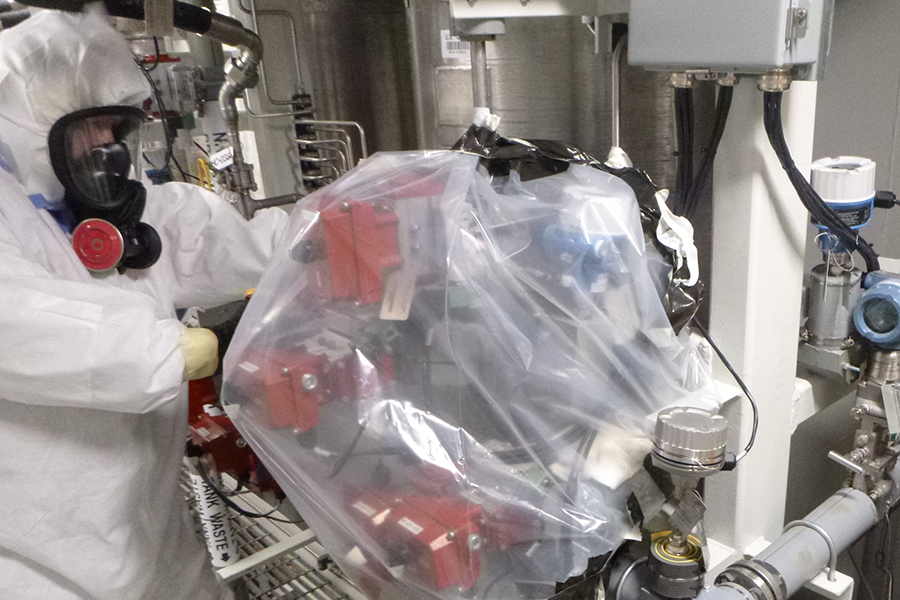
Home » Hanford teamwork continues to lead to transformation
Hanford teamwork continues to lead to transformation

April 13, 2023
I’m proud of the work the One Hanford Team has done over the last year and of the ambitious plans we’re putting into action to continue safely progressing our important cleanup mission in 2023.
The Department of Energy (DOE) federal team and our contractor partners make up the One Hanford Team. It’s a “one site, one mission” enterprise philosophy that enhances our communications, collaboration, efficiency and teamwork so we can work seamlessly and safely across our 580-square-mile site.
Together, we will continue to drive our mission with a sense of purpose and deliberate urgency while never losing focus on our top priority, the health and safety of our workforce and our community.
In January 2022, Hanford achieved an important transformational moment when we began treating radioactive and chemical tank waste on a large scale for the first time. Waste processed through the Tank-Side Cesium Removal System is being staged until it can be fed directly to the nearby Waste Treatment and Immobilization Plant for vitrification, or immobilization in glass, when the plant comes online.
As of the end of 2022, we had treated nearly 380,000 gallons of tank waste, and we’ll continue to work toward our goal of more than 800,000 gallons by the end of calendar year 2023.

Throughout the year, crews at the Waste Treatment and Immobilization Plant progressed commissioning activities, which includes continuously enhancing operator proficiency on major systems that will vitrify tank waste in two large melters in the plant’s Low-Activity Waste Facility.
An important indication of our progress was achieved in October when workers started heating up the first of two large, 300-ton melters. During the heatup, a system abnormality was identified. The operators reacted correctly and conservatively in accordance with their training, and safely shut down the operation.
While the startup heater power supply issue that caused the melter heatup to be stopped has been corrected, similar systems also were analyzed as part of the robust causal assessment process. We found the need for additional analysis and testing of a few other similar systems to ensure safe and successful future operations.
Melter heatup will resume after testing those systems to continue moving the plant and operations team through the rigorous commissioning process toward the start of tank waste vitrification in 2024.
In parallel with commissioning operations at the Waste Treatment and Immobilization plant, site personnel continued to expand and upgrade other Hanford facilities that are part of the highly interdependent and integrated Direct-Feed Low-Activity Waste program to ensure they are ready when the Waste Treatment and Immobilization Plant goes online.
Workers built a fourth 8 million-gallon holding basin at the Liquid Effluent Retention Facility to prepare for receiving contaminated wastewater from the plant and our disposal facility for vitrified low-activity tank waste.
The wastewater is transferred from holding basins to the nearby Effluent Treatment Facility, where workers are completing upgrades to several systems that remove contaminants for safe disposal.
While significant progress is being made for the transformational tank waste treatment era at Hanford, several important projects to safely mitigate or eliminate risks also advanced in 2022.
Just over a year after breaking ground, crews finished building a protective enclosure, or “cocoon,” around the former K East plutonium production reactor ahead of schedule and under budget. Its completion is a significant accomplishment in our risk-reduction cleanup effort along the Columbia River.
Workers also have begun to remove debris from the basin in the nearby K West Reactor where spent reactor fuel was stored during the national security mission of the site. They are preparing the basin to be drained and demolished over the next three years, further reducing the risk to the Columbia River, and setting conditions for the K West Reactor to be placed in a protective enclosure.
At Hanford’s 324 Building, workers continued preparations to excavate contaminated soil under the building. Important activities progressed to stabilize the foundation around the area where workers, behind thick radiation shielding, will eventually operate equipment remotely to cut through the floor and remove the contaminated soil, ultimately establishing conditions for the facility to be safely demolished.
On the Central Plateau, workers made progress on preparing to transfer nearly 2,000 highly radioactive capsules containing cesium and strontium from underwater storage in the Waste Encapsulation and Storage Facility to a nearby dry storage pad. Transferring the capsules to dry storage places them in a safe and stable configuration for long-term storage.
In September, we topped the 2 billion-gallon mark in treating contaminated groundwater for the eighth consecutive fiscal year, demonstrating our ability to consistently deliver impactful cleanup progress. This brings the total to more than 30 billion gallons treated and 700 tons of contaminants removed since we began treating groundwater in the mid-1990s.
The cleanup effort across the site would not be possible without utility services that provide water, power, sewer, information technology, and roads for our work and workforce. Workers are constructing a new Central Plateau Water Treatment Facility that will provide all potable water to the cleanup hub of the Hanford site, the Central Plateau, to support a broad range of activities, including future tank waste treatment operations.
The DOE and our contractor partners remain committed to consistent engagement and constructive relationships across a very diverse landscape of local, state, regional, national stakeholders and tribal nations.
Our effort to increase awareness of the impressive work being done today at Hanford, as well as the significant body of cleanup work completed by our exceptional team of dedicated professionals over the last 30 years, is focused on facilitating collaboration to enhance the department’s ability to make the best possible decisions to safely progress our very complex mission.
We also remain committed to strengthening alignment with our regulators, the state of Washington, and Environmental Protection Agency, to support our collective obligation to deliver impactful cleanup progress on behalf of the nation’s taxpayers.
The One Hanford Team is building our part of the Hanford story every day, through our commitment to safe and efficient environmental cleanup focused on maximizing every dollar invested by Congress in hazard and risk reduction.
In that way, we create the safest possible workplace for our workforce, efficiently reducing the hazards of our site to protect our community and continuing to provide a strong foundation for the economic prosperity of the Tri-Cities and the Pacific Northwest.
Brian Vance is the manager of the U.S. Department of Energy Office of River Protection and Richland Operations Office.
Hanford
KEYWORDS april 2023





